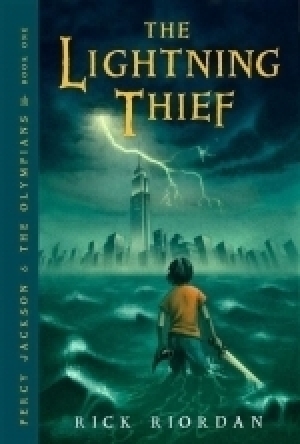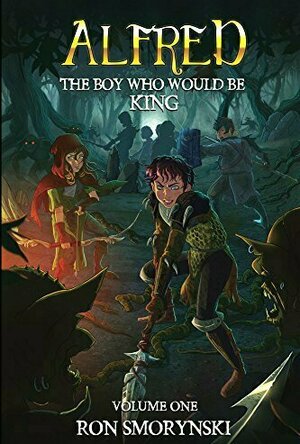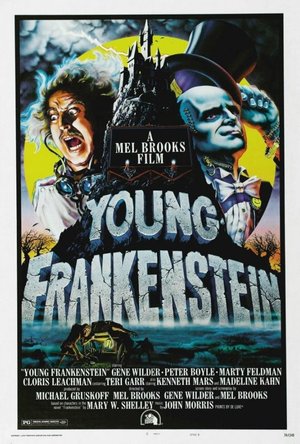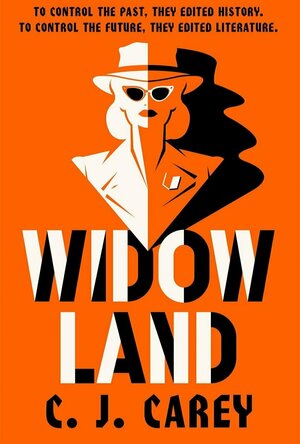Search
Search results
Gareth von Kallenbach (980 KP) rated the PC version of Wolfenstein: The New Order in Video Games
Jun 19, 2019
Although I’m undoubtedly dating myself by admitting this, I can finally remember playing Castle Wolfenstein and Return to Castle Wolfenstein in the 80s on an Apple IIe computer. Highly innovative for its time the game helped spawn the rise of the first-person shooter when it reemerged in the 90s and has had successful returns approximately every few years since. Machine Games working with the Id Tech 5 engine via Bethesda/Zenimax has given gamers a very graphically impressive new entry into the series called Wolfenstein: The New Order.
Once again playing as BJ Blazkowicz, players will take on the darkest forces that the Nazi’s can unleash and in a very interesting new twist, the game starts in World War II and then ventures to 1960 where BJ is recovering from an injury and awakens from a coma to a world where the Nazis have unleashed atomic weapons on the United States and have won the war.
BJ must gather up his strength and locate the few remaining resistance fighters left alive to mount a counter attack to save the day. While this sounds simple enough, it is anything but as the legions of adversaries in your way are daunting and challenging.
Not only are there the standard Nazi goons, but there are mechanized units that are clad in armor and do huge amounts of damage with their weapons as well as plenty of nasty characters along the way for you to deal with.
Thankfully to go with your hate of the Nazis you have an impressive arsenal including knives, pistols, shotguns, machine guns, energy weapons, Tesla grenades, and a sniper rifle, many of which can be dual wielded to get that extra ounce of carnage.
There are also gun emplacements which can be manned to mow down the hordes or can be detached to serve as a heavy hitter even though your mobility is greatly reduced.
The game is very hardcore in its content as sex, language, and graphic violence are the norm but when you consider locales ranging from concentration camps to battlefield strongholds are the norm, this is not a tea and cookies type of game.
There is plenty to like about the game from the great looking graphics to the characters and storyline and I really enjoyed the moon level of the game complete with my space suit and walk in reduced gravity with muffled sound.
That being said, there are a few things that became frustrating to me from time to time. First off, the game does have a few timed jumps and puzzles including one early in the game. Playing on a PC, it was a pain to set the keys the way that was best to do said jumps yet maintain the settings I wanted for the rest of the game.
If I wanted timed jumps to and from platforms, I would fire up the Wii U and load up something in the Donkey Kong or Mario line, as in a game of this type, want the action to flow without having to make a leap in order to advance the story.
I could also see the influence of Call of Duty on games of this type as there were the levels of wave after wave coming at you as well as the stealth missions and checkpoint save system. All of which have become all too standard in this era of consoles. I miss the day when I could save my progress at any point in a game.
This would have been nice as the game does have some very tough challenges but thankfully players can adjust their skill level as they go so if they become overly frustrated they can lower the difficulty and play on.
The game has a great energy weapon with a dual use cutting tool which allowed me to cut through vents and chains, and the use of metal scraps to increase your armor was a nice throwback to the earlier games in the series.
I really admired how the designers took the best parts of the series yet improved the graphics and told a story that was darker and more engaging than ever before.
The game does not have a multiplay feature which is a disappointment as I had hoped to get online with the amazing maps and weapons of the game, but who knows what the future will hold.
With over 20 hours of gameplay, there is much that I liked about the game and upon completion I was able to overlook many of the frustrations I had in game.
The ending is open to interpretations so who knows what the future of the series will be, but I think that we have not seen the last of the series, and I look forward to more in a few years.
http://sknr.net/2014/06/23/wolfenstein-new-order/
Once again playing as BJ Blazkowicz, players will take on the darkest forces that the Nazi’s can unleash and in a very interesting new twist, the game starts in World War II and then ventures to 1960 where BJ is recovering from an injury and awakens from a coma to a world where the Nazis have unleashed atomic weapons on the United States and have won the war.
BJ must gather up his strength and locate the few remaining resistance fighters left alive to mount a counter attack to save the day. While this sounds simple enough, it is anything but as the legions of adversaries in your way are daunting and challenging.
Not only are there the standard Nazi goons, but there are mechanized units that are clad in armor and do huge amounts of damage with their weapons as well as plenty of nasty characters along the way for you to deal with.
Thankfully to go with your hate of the Nazis you have an impressive arsenal including knives, pistols, shotguns, machine guns, energy weapons, Tesla grenades, and a sniper rifle, many of which can be dual wielded to get that extra ounce of carnage.
There are also gun emplacements which can be manned to mow down the hordes or can be detached to serve as a heavy hitter even though your mobility is greatly reduced.
The game is very hardcore in its content as sex, language, and graphic violence are the norm but when you consider locales ranging from concentration camps to battlefield strongholds are the norm, this is not a tea and cookies type of game.
There is plenty to like about the game from the great looking graphics to the characters and storyline and I really enjoyed the moon level of the game complete with my space suit and walk in reduced gravity with muffled sound.
That being said, there are a few things that became frustrating to me from time to time. First off, the game does have a few timed jumps and puzzles including one early in the game. Playing on a PC, it was a pain to set the keys the way that was best to do said jumps yet maintain the settings I wanted for the rest of the game.
If I wanted timed jumps to and from platforms, I would fire up the Wii U and load up something in the Donkey Kong or Mario line, as in a game of this type, want the action to flow without having to make a leap in order to advance the story.
I could also see the influence of Call of Duty on games of this type as there were the levels of wave after wave coming at you as well as the stealth missions and checkpoint save system. All of which have become all too standard in this era of consoles. I miss the day when I could save my progress at any point in a game.
This would have been nice as the game does have some very tough challenges but thankfully players can adjust their skill level as they go so if they become overly frustrated they can lower the difficulty and play on.
The game has a great energy weapon with a dual use cutting tool which allowed me to cut through vents and chains, and the use of metal scraps to increase your armor was a nice throwback to the earlier games in the series.
I really admired how the designers took the best parts of the series yet improved the graphics and told a story that was darker and more engaging than ever before.
The game does not have a multiplay feature which is a disappointment as I had hoped to get online with the amazing maps and weapons of the game, but who knows what the future will hold.
With over 20 hours of gameplay, there is much that I liked about the game and upon completion I was able to overlook many of the frustrations I had in game.
The ending is open to interpretations so who knows what the future of the series will be, but I think that we have not seen the last of the series, and I look forward to more in a few years.
http://sknr.net/2014/06/23/wolfenstein-new-order/
Rachel King (13 KP) rated The Lightning Thief in Books
Feb 11, 2019
I decided to read this partly because I had just seen the movie and partly because I heard that it was a good series for fans of the Harry Potter series. Well, in regards to the movie, it's appalling how much the producers changed the book's plot to make the movie. If they make a second movie, I likely will not be interested, as I much more prefer the book's plot. In regards to the book's similarities to Harry Potter, they are vast, but really, who wouldn't aim to write something as popular and complex as the Harry Potter series? J.K. Rowling owns a castle! So, on to the actual book.
Years ago I thought that writing a fantasy series that uses Greek mythology would be a great idea, so I was excited when I heard of the Percy Jackson series. I love the modernized spin on the various good and bad characters, bringing them to life in both creative and believeable ways, such as Ares on a Harley and "Mr." Charon wearing Italian suits. The "Gods" of mythology at times seemed more like immature teenagers or work-aholic parents, with as much flaws as any normal human, and I really appreciated that they were differentiated from The GOD early on, and their place in the known universe was explained in the context of Percy's world. I especially like the scene of Hephaestus' trap that Percy and Annabeth get caught in. How the "normal" humans explained away the activities of the mythological characters was probably the most creative of the whole text, and at times rather humorous. It actually makes me wonder how much of what I see everyday is only a cover for what is really happening in the spiritual realm.
The only element that really bugged me about the text was how Percy changed from this moody, victimized pre-teen to a rather mature young man with almost no transition - emotional or otherwise. It almost felt like Percy possessed two different personalities that shared the same body. While Percy often says that he did not want to be the son of Poseidon, I found evidence of inner termoil strangely absent throughout the text. I also felt that there were smaller issues that could have been more detailed and developed, such as the characters of Grover and Annabeth. I will be continuing the series with The Sea of Monsters (Percy Jackson and the Olympians, Book 2) in the near future.
Years ago I thought that writing a fantasy series that uses Greek mythology would be a great idea, so I was excited when I heard of the Percy Jackson series. I love the modernized spin on the various good and bad characters, bringing them to life in both creative and believeable ways, such as Ares on a Harley and "Mr." Charon wearing Italian suits. The "Gods" of mythology at times seemed more like immature teenagers or work-aholic parents, with as much flaws as any normal human, and I really appreciated that they were differentiated from The GOD early on, and their place in the known universe was explained in the context of Percy's world. I especially like the scene of Hephaestus' trap that Percy and Annabeth get caught in. How the "normal" humans explained away the activities of the mythological characters was probably the most creative of the whole text, and at times rather humorous. It actually makes me wonder how much of what I see everyday is only a cover for what is really happening in the spiritual realm.
The only element that really bugged me about the text was how Percy changed from this moody, victimized pre-teen to a rather mature young man with almost no transition - emotional or otherwise. It almost felt like Percy possessed two different personalities that shared the same body. While Percy often says that he did not want to be the son of Poseidon, I found evidence of inner termoil strangely absent throughout the text. I also felt that there were smaller issues that could have been more detailed and developed, such as the characters of Grover and Annabeth. I will be continuing the series with The Sea of Monsters (Percy Jackson and the Olympians, Book 2) in the near future.
Gareth von Kallenbach (980 KP) rated Call of Duty: Infinite Warfare - Absolultion in Video Games
Jun 19, 2019
The third of a planned four content packs for Call of Duty: Infinite Warfare has arrived with Absolution. The collection was first available for the Playstation 4 system and was released for the Xbox One and PC platforms about five weeks later and contains the usual offerings of four new maps and a new chapter for the Zombie mode of the game.
The maps are as follows…
Ember
This is a remake of the classic map “Resistance” From the castle lined landscape to the close-quarters fighting in rooms like gallows or a torture area this is a great map for those looking to run and gun.
Bermuda
This is a fun map based on a Shanty Town fishing village. There are locales ranging from a Fish Market to a Lighthouse and the mix of colors and action make this one really enjoyable.
Permafrost
This is a frozen landscape set in the ruins of a city. The map has several open areas where players can attack from above thanks to holes in the roof and streets. The debris strewn map offers plenty of cover but also numerous places for enemies to attack from all angles.
Fore
This is a large map that is so much fun to play. Set in a mini-golf course, players can run into the arcade, putting areas, and props to attack the enemy. There is plenty of cover and also terrain that is uneven giving a new and diverse set of challenges to players.
While the new maps are lots of fun, the main draw of the collection was the latest chapter in the Zombie mode where four aspiring actors are drawn into actual horror films by a demented Director.
The previous chapters have given us an 80s theme park, a 90s Summer Camp, and a 70s Disco Infused Martial Arts setting. This time out, Attack of the Radioactive things lets players play with and interact with Elvira in a 1950s Atomic Monster setting. The mode starts in Black and White before moving to color and even allows for a red tint Chroma mode.
Of course waves of Zombies and other terrors await and players must run and fight to survive.
This has been another winning collection for Infinite Warfare. While it does not offer anything radically new or different, it does offer plenty of fun and will increase your enjoyment of the game.
I am looking forward to seeing the final pack, around October ahead of the new Call of Duty: World War 2.
http://sknr.net/2017/08/13/call-duty-infinite-warfare-absolution-dlc/
The maps are as follows…
Ember
This is a remake of the classic map “Resistance” From the castle lined landscape to the close-quarters fighting in rooms like gallows or a torture area this is a great map for those looking to run and gun.
Bermuda
This is a fun map based on a Shanty Town fishing village. There are locales ranging from a Fish Market to a Lighthouse and the mix of colors and action make this one really enjoyable.
Permafrost
This is a frozen landscape set in the ruins of a city. The map has several open areas where players can attack from above thanks to holes in the roof and streets. The debris strewn map offers plenty of cover but also numerous places for enemies to attack from all angles.
Fore
This is a large map that is so much fun to play. Set in a mini-golf course, players can run into the arcade, putting areas, and props to attack the enemy. There is plenty of cover and also terrain that is uneven giving a new and diverse set of challenges to players.
While the new maps are lots of fun, the main draw of the collection was the latest chapter in the Zombie mode where four aspiring actors are drawn into actual horror films by a demented Director.
The previous chapters have given us an 80s theme park, a 90s Summer Camp, and a 70s Disco Infused Martial Arts setting. This time out, Attack of the Radioactive things lets players play with and interact with Elvira in a 1950s Atomic Monster setting. The mode starts in Black and White before moving to color and even allows for a red tint Chroma mode.
Of course waves of Zombies and other terrors await and players must run and fight to survive.
This has been another winning collection for Infinite Warfare. While it does not offer anything radically new or different, it does offer plenty of fun and will increase your enjoyment of the game.
I am looking forward to seeing the final pack, around October ahead of the new Call of Duty: World War 2.
http://sknr.net/2017/08/13/call-duty-infinite-warfare-absolution-dlc/
Gareth von Kallenbach (980 KP) rated Call of duty: Black ops III - The Awakening in Video Games
Jun 19, 2019
Fans of Call of Duty: Black Ops 3 who plays on the PC or Xbox One can now experience the first of four planned DLC packs with the release of The Awakening. The packs contain four new maps and a new Zombie mode episode which expands the multiplayer experience which has always been a staple of the series.
The first map is The Gauntlet which is a facility divide into various zones. There is a jungle zone, a frozen zone, and one where it rains as you go down an urban street. This map will test your skills as there are numerous areas for enemies to trap, snipe, and hide. It is also very detailed and will force you to remember not to stop and look at the scenery.
The second map is called Splash and this was the most colorful map of any DLC yet. Set in a water park, players can duck down water slides; hide in pools, gift shops and more. Being able to slide down a tube run and come up firing made this really fun. There are many places to explore but also several places for an enemy player to strike from so be on your toes for anything.
Rise is the third map and it is set in a cold construction yard. There are plenty of walls to wall run as well as large open areas where snipers will happily pick you off. The close quarters of the buildings makes for some intense action up close and one that you will want to make sure to prepare for.
Skyjacked rounds out the set as this is an updated map based on the popular Hijacked map from Black Ops 2. Instead of a boat, this time players must battle on a flying ship, but thankfully anyone who has logged time with the original may think they have a leg up, but there are plenty of new twists to be found.
Zombie fans will love Der Eisendrache which allows up to four players to battle Zombies and other forces of evil in a Castle complete with curved stairs, snow, and even a dragon.
The Awakening is a nice addition to the series as it provides new content which will make me want to spend more time with the game as after reaching a few levels of Prestige I found myself looking for a break and The Awakening is just the call I needed to return to duty.
http://sknr.net/2016/03/04/call-of-duty-black-ops-3-the-awakening-dlc/
The first map is The Gauntlet which is a facility divide into various zones. There is a jungle zone, a frozen zone, and one where it rains as you go down an urban street. This map will test your skills as there are numerous areas for enemies to trap, snipe, and hide. It is also very detailed and will force you to remember not to stop and look at the scenery.
The second map is called Splash and this was the most colorful map of any DLC yet. Set in a water park, players can duck down water slides; hide in pools, gift shops and more. Being able to slide down a tube run and come up firing made this really fun. There are many places to explore but also several places for an enemy player to strike from so be on your toes for anything.
Rise is the third map and it is set in a cold construction yard. There are plenty of walls to wall run as well as large open areas where snipers will happily pick you off. The close quarters of the buildings makes for some intense action up close and one that you will want to make sure to prepare for.
Skyjacked rounds out the set as this is an updated map based on the popular Hijacked map from Black Ops 2. Instead of a boat, this time players must battle on a flying ship, but thankfully anyone who has logged time with the original may think they have a leg up, but there are plenty of new twists to be found.
Zombie fans will love Der Eisendrache which allows up to four players to battle Zombies and other forces of evil in a Castle complete with curved stairs, snow, and even a dragon.
The Awakening is a nice addition to the series as it provides new content which will make me want to spend more time with the game as after reaching a few levels of Prestige I found myself looking for a break and The Awakening is just the call I needed to return to duty.
http://sknr.net/2016/03/04/call-of-duty-black-ops-3-the-awakening-dlc/
EmersonRose (320 KP) rated Alfred: The Boy Who Would Be King in Books
Nov 20, 2019
Alfred is a mostly ordinary boy, going to school, playing video games, and reading books about medieval history. His mother is a bit eccentric but all in all, he is living the regular life of an 11-year-old. That is until a mysterious man shows up one night and Alfred suddenly finds himself in a fantastical, medieval kingdom. What is even more strange, Alfred soon discovers he has families ties to this strange land and is the only heir left to the kingdom’s throne. Thrust in the middle of a country cursed by a witch, a dark lord, terrible creatures, and famine, Alfred has his work cut out for him. But thanks to the help of a few new friends, his medieval video game, and book knowledge, he is up for the challenge.
Alfred is a determined, hopeful, excited kid living out a child’s fantasy. He manages to stay strong through horrible circumstances and uses his knowledge of the period along with that of his own time to try and make things better for his people. The mashing together of periods offers plenty of hilarious moments as Alfred tries to explain things like TV and pro-wrestlers. His knowledge of things like agriculture and battle defenses quickly become lifesavers for the peasants who have accepted the return of the king.
This fantastical adventure is a beautiful story that balances the dark, harsh realities of 6997428survival against both enemies and natural, the struggle of the weight thrust upon Alfred’s shoulders, while also remaining lighthearted, funny, and fun. The story unfolds like a puzzle before the reader, much like it does for Alfred, as you discover more about his family, magic, and the politics of this magical world. Author Ron Smorynski has done an incredible job of creating an extraordinary world and characters that you can become invested it. The story captures the pure adventure and action so longed for in fantasy adventures while also tackling growing up, history, and family struggles. To me, it brings to mind such classics as Narnia and The Castle in the Attic.
The book is an excellent beginning. While the story itself is well rounded in itself, the real magic is in the story that it has left to tell. Throughout the book, we get the beginnings of magical rules, political struggle, villains powers, and the complicated history of Alfred’s family and those that knew them. The book leaves you with as many secrets as it answers and simply begs for a sequel. I am excited to see more from this author and continue my journey with Alfred and his friends, hopefully soon!
Alfred is a determined, hopeful, excited kid living out a child’s fantasy. He manages to stay strong through horrible circumstances and uses his knowledge of the period along with that of his own time to try and make things better for his people. The mashing together of periods offers plenty of hilarious moments as Alfred tries to explain things like TV and pro-wrestlers. His knowledge of things like agriculture and battle defenses quickly become lifesavers for the peasants who have accepted the return of the king.
This fantastical adventure is a beautiful story that balances the dark, harsh realities of 6997428survival against both enemies and natural, the struggle of the weight thrust upon Alfred’s shoulders, while also remaining lighthearted, funny, and fun. The story unfolds like a puzzle before the reader, much like it does for Alfred, as you discover more about his family, magic, and the politics of this magical world. Author Ron Smorynski has done an incredible job of creating an extraordinary world and characters that you can become invested it. The story captures the pure adventure and action so longed for in fantasy adventures while also tackling growing up, history, and family struggles. To me, it brings to mind such classics as Narnia and The Castle in the Attic.
The book is an excellent beginning. While the story itself is well rounded in itself, the real magic is in the story that it has left to tell. Throughout the book, we get the beginnings of magical rules, political struggle, villains powers, and the complicated history of Alfred’s family and those that knew them. The book leaves you with as many secrets as it answers and simply begs for a sequel. I am excited to see more from this author and continue my journey with Alfred and his friends, hopefully soon!
Gareth von Kallenbach (980 KP) rated Maleficent (2014) in Movies
Aug 6, 2019
I was quite apprehensive headed into the new Disney movie ‘Maleficent’
(Starring Angelina Jolie, Elle Fanning, Sharlto Copley, and Sam Riley), because all the ‘official’ reviews said it wasn’t any good.
I thoroughly disagree.
Maleficent made me laugh, it made me cry and it had me holding my breath in anticipation in some parts.
It takes a ‘Wicked’ type look at the age old story of Sleeping Beauty.
While the narration is from the point of view of a much older Aurora, the story focuses on the point of view of Maleficent.
The young Maleficent (played by Isobelle Molloy) meets a young orphaned peasant boy with aspirations to live in the neighboring kingdoms castle.
Through the years they bond and grow close and share what is supposed to be ‘true loves kiss’.
Time moves on. The king in the adjoining kingdom is greedy and wants the lands that are ruled over by Maleficent. There is a battle, he is soundly defeated, and the King is injured mortally in battle. He pronounces that he will make whoever avenges him and kills Maleficent the next ruler.
Stefan, still being ambitious, finds Maleficent, and while pretending to still be her friend, drugs her. He can’t bring himself to actually kill her and steals her wings instead, to present to the king as proof of her demise.
Stefan is crowned king. Time passes.
Maleficent’s pain and anger and betrayal do not dissipate. They grow and coalesce to the point that at the celebration to celebrate the birth of King Stefan’s daughter Aurora, she curses the child, sealing her fate that naught but ‘true loves kiss’ will break the curse.
The story follows the child’s growth, with Maleficent watching her every move, and getting closer and closer to her with every passing year.
Maleficent dubs Aurora ‘Beastie’, and Aurora calls Maleficent ‘Godmother’.
As Aurora’s 16th birthday draws near, Maleficent grows desperate to break the very curse that she had cast many years before.
It does not work.
I won’t ruin it by telling the ending, but it was action packed, and heart wrenching, and (at least to me) marginally unpredictable…. (I thought one person would break it, but another did…. I did figure it out before it happened, but mostly because I’ve been watching Once Upon A Time).
I really enjoyed the film, I loved the 3D of it, and I would most assuredly see it again. I wouldn’t recommend it for very young children, and I don’t feel like I can bring my almost 6 year old to it, but I would consider letting him see it by age 8 or 9.
(Starring Angelina Jolie, Elle Fanning, Sharlto Copley, and Sam Riley), because all the ‘official’ reviews said it wasn’t any good.
I thoroughly disagree.
Maleficent made me laugh, it made me cry and it had me holding my breath in anticipation in some parts.
It takes a ‘Wicked’ type look at the age old story of Sleeping Beauty.
While the narration is from the point of view of a much older Aurora, the story focuses on the point of view of Maleficent.
The young Maleficent (played by Isobelle Molloy) meets a young orphaned peasant boy with aspirations to live in the neighboring kingdoms castle.
Through the years they bond and grow close and share what is supposed to be ‘true loves kiss’.
Time moves on. The king in the adjoining kingdom is greedy and wants the lands that are ruled over by Maleficent. There is a battle, he is soundly defeated, and the King is injured mortally in battle. He pronounces that he will make whoever avenges him and kills Maleficent the next ruler.
Stefan, still being ambitious, finds Maleficent, and while pretending to still be her friend, drugs her. He can’t bring himself to actually kill her and steals her wings instead, to present to the king as proof of her demise.
Stefan is crowned king. Time passes.
Maleficent’s pain and anger and betrayal do not dissipate. They grow and coalesce to the point that at the celebration to celebrate the birth of King Stefan’s daughter Aurora, she curses the child, sealing her fate that naught but ‘true loves kiss’ will break the curse.
The story follows the child’s growth, with Maleficent watching her every move, and getting closer and closer to her with every passing year.
Maleficent dubs Aurora ‘Beastie’, and Aurora calls Maleficent ‘Godmother’.
As Aurora’s 16th birthday draws near, Maleficent grows desperate to break the very curse that she had cast many years before.
It does not work.
I won’t ruin it by telling the ending, but it was action packed, and heart wrenching, and (at least to me) marginally unpredictable…. (I thought one person would break it, but another did…. I did figure it out before it happened, but mostly because I’ve been watching Once Upon A Time).
I really enjoyed the film, I loved the 3D of it, and I would most assuredly see it again. I wouldn’t recommend it for very young children, and I don’t feel like I can bring my almost 6 year old to it, but I would consider letting him see it by age 8 or 9.
BankofMarquis (1832 KP) rated Young Frankenstein (1974) in Movies
Apr 20, 2020
My All Time Favorite Comedy
There are certain films that I can revisit time and time again and the effects of the film do not diminish for me and I would argue that they get better with age...and with repeated viewings.
Such is the case with Mel Brooks' Universal Horror film spoof/satire YOUNG FRANKENSTEIN from 1974. It is a work of comedic genius and features some of the most memorable characters in motion picture comedy history.
Co-Writen by Brooks and Gene Wilder, Directed by Brooks and starring Wilder, Marty Feldman, Peter Boyle, Teri Garr, Cloris Leachman and the great Madeline Kahn, this film sends up the black and white Universal Horror films of the 1930's not by making fun of them, but by lovingly recreating them and then exaggerating the scenes/circumstances.
Wilder is at his manic best as Dr. Frederick Frankenstein - the grandson of the original Frankenstein - who is brought to Transylvania and soon takes up his grandfather's work. He works through a controlled rage throughout the film until such times where the rage (and his hair) comes bursting forth in maniacal energy that is a comic tour-de-force.
He is surrounded by an outstanding collection of misfits, most notably Marty Feldman's servant/assistant Igor who is game for just about anything. Under-rated is the comedic performance of Teri Garr as Frankenstein's lab assistant Inga who not only has good looks ("what knockers") but can hold her own with Wilder and Feldman in a scene. Peter Boyle is earnest and scary and vulnerable (all at the same time) in his portrayal of "the Monster" who just wants to be understood - the "Puttin' on the Ritz" scene shows some fine comedic chops in an actor that up to this point had not really done comedy (his Emmy nominated work in EVERYONE LOVES RAYMOND is years in the future).
But it is the work of 2 female comediennes that drives this film to another level. Madeline Kahn as Frederick's fiance, Elizabeth, commands (and steals) every scene she is in while the inscrutable Cloris Leachman is deadpan perfection as castle housekeeper Frau Bleucher (horse whinny).
Director Brooks keeps the jokes coming at a fast a furious pace, but keeps the pace and the story going as well. This is much more than "just a collection of jokes" - it is a very good movie.
This film falls squarely in my "Top 10 All Time Favorite Films" - and my #1 comedy of all time.
Letter Grade: A+
10 stars (out of 10) and you can take that to the Bank(ofMarquis)
Such is the case with Mel Brooks' Universal Horror film spoof/satire YOUNG FRANKENSTEIN from 1974. It is a work of comedic genius and features some of the most memorable characters in motion picture comedy history.
Co-Writen by Brooks and Gene Wilder, Directed by Brooks and starring Wilder, Marty Feldman, Peter Boyle, Teri Garr, Cloris Leachman and the great Madeline Kahn, this film sends up the black and white Universal Horror films of the 1930's not by making fun of them, but by lovingly recreating them and then exaggerating the scenes/circumstances.
Wilder is at his manic best as Dr. Frederick Frankenstein - the grandson of the original Frankenstein - who is brought to Transylvania and soon takes up his grandfather's work. He works through a controlled rage throughout the film until such times where the rage (and his hair) comes bursting forth in maniacal energy that is a comic tour-de-force.
He is surrounded by an outstanding collection of misfits, most notably Marty Feldman's servant/assistant Igor who is game for just about anything. Under-rated is the comedic performance of Teri Garr as Frankenstein's lab assistant Inga who not only has good looks ("what knockers") but can hold her own with Wilder and Feldman in a scene. Peter Boyle is earnest and scary and vulnerable (all at the same time) in his portrayal of "the Monster" who just wants to be understood - the "Puttin' on the Ritz" scene shows some fine comedic chops in an actor that up to this point had not really done comedy (his Emmy nominated work in EVERYONE LOVES RAYMOND is years in the future).
But it is the work of 2 female comediennes that drives this film to another level. Madeline Kahn as Frederick's fiance, Elizabeth, commands (and steals) every scene she is in while the inscrutable Cloris Leachman is deadpan perfection as castle housekeeper Frau Bleucher (horse whinny).
Director Brooks keeps the jokes coming at a fast a furious pace, but keeps the pace and the story going as well. This is much more than "just a collection of jokes" - it is a very good movie.
This film falls squarely in my "Top 10 All Time Favorite Films" - and my #1 comedy of all time.
Letter Grade: A+
10 stars (out of 10) and you can take that to the Bank(ofMarquis)

Lonely Planet Pocket Orlando & Walt Disney World Resort
Lonely Planet and Jennifer Rasin Denniston
Book
Lonely Planet: The world's leading travel guide publisher Lonely Planet Pocket Orlando & Walt Disney...
Widowland is a really atmospheric thriller, set in an alternate timeline - one where the German National Socialists and the British reach a compromise in 1940 and become the Grand Alliance. This alliance reads more like occupation though. Britain doesn’t have it’s own government, all laws come from Germany, and Britain is ruled by a German, the Protector, Alfred Rosenberg.
Even though there’s a huge shortage of young men (they’ve been ‘shipped off’ to the rest of occupied Europe to ‘work’) and women greatly outnumber men, women are divided into categories, or castes. These depend on their age, heritage, reproductive status and physical characteristics, and each category is named after a significant woman in Hitlers life. Rose is a Geli, one of the elite. Young, beautiful, and most importantly, fertile.
I thoroughly enjoyed this and read it far too quickly. It had a black and white, 1950’s movie atmosphere about it, and I could easily picture the people and scenes in my head. It brought to mind The Man in the High Castle with regards to Occupation, and 1984 with regards to feeling as though you’re constantly watched - as well as the people being told how to react, think and live. This was especially evident in Rose’s job: she rewrites classics so that they’re in line with the regimes ideals: so no independent, strong females, and all the male leads are changed to Sturmbannführer (at least!).
The drudgery of everyday life made me think of how I envisaged life in the GDR - as well as only allowing state sanctioned literature, there was only one radio channel in Grand Alliance Britain, with some brave people listening to illegal foreign radio stations, knowing that this could result in extreme punishment.
When Rose goes to Widowland near Oxford (there are a few throughout the country) to find the source of a potential rebellion, she’s shocked to see older women living in abject poverty, only permitted to eat a subsistence diet and work menial jobs. But these women are intelligent, and they’re not happy in their state regulated lives. Between her reading of classic books and meeting these women, Rose begins to see what’s wrong with the world she has been living in, and this dawning realisation is so well described. We see how reading ‘subversive’ classics seems to get under her skin, and how she realises that the treatment of women is wrong in this Grand Alliance.
I could go on and on. I raced through this book, and I loved the ending, which came far too quickly!
Many thanks to Quercus for my copy of this book through NetGalley.
Even though there’s a huge shortage of young men (they’ve been ‘shipped off’ to the rest of occupied Europe to ‘work’) and women greatly outnumber men, women are divided into categories, or castes. These depend on their age, heritage, reproductive status and physical characteristics, and each category is named after a significant woman in Hitlers life. Rose is a Geli, one of the elite. Young, beautiful, and most importantly, fertile.
I thoroughly enjoyed this and read it far too quickly. It had a black and white, 1950’s movie atmosphere about it, and I could easily picture the people and scenes in my head. It brought to mind The Man in the High Castle with regards to Occupation, and 1984 with regards to feeling as though you’re constantly watched - as well as the people being told how to react, think and live. This was especially evident in Rose’s job: she rewrites classics so that they’re in line with the regimes ideals: so no independent, strong females, and all the male leads are changed to Sturmbannführer (at least!).
The drudgery of everyday life made me think of how I envisaged life in the GDR - as well as only allowing state sanctioned literature, there was only one radio channel in Grand Alliance Britain, with some brave people listening to illegal foreign radio stations, knowing that this could result in extreme punishment.
When Rose goes to Widowland near Oxford (there are a few throughout the country) to find the source of a potential rebellion, she’s shocked to see older women living in abject poverty, only permitted to eat a subsistence diet and work menial jobs. But these women are intelligent, and they’re not happy in their state regulated lives. Between her reading of classic books and meeting these women, Rose begins to see what’s wrong with the world she has been living in, and this dawning realisation is so well described. We see how reading ‘subversive’ classics seems to get under her skin, and how she realises that the treatment of women is wrong in this Grand Alliance.
I could go on and on. I raced through this book, and I loved the ending, which came far too quickly!
Many thanks to Quercus for my copy of this book through NetGalley.







